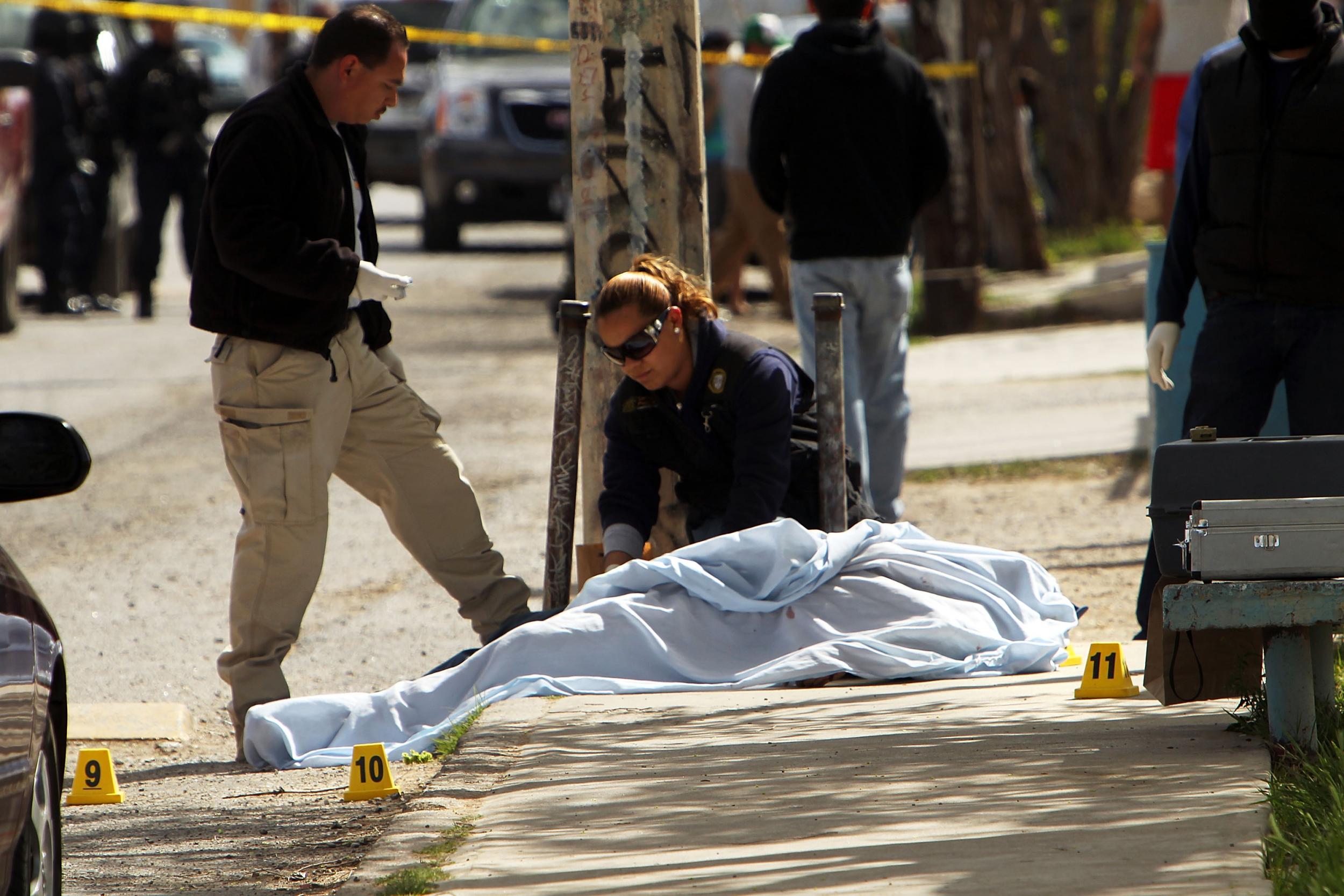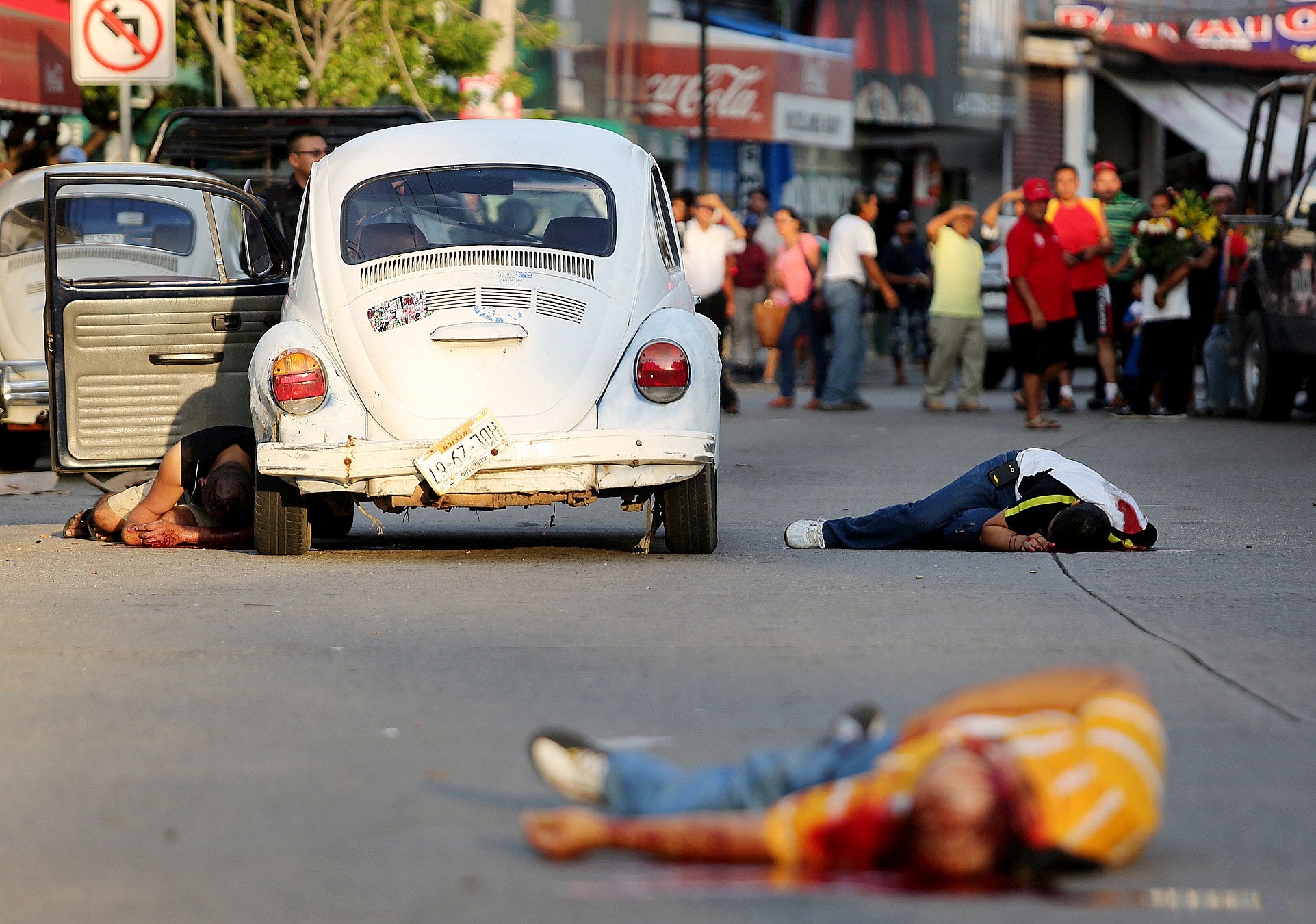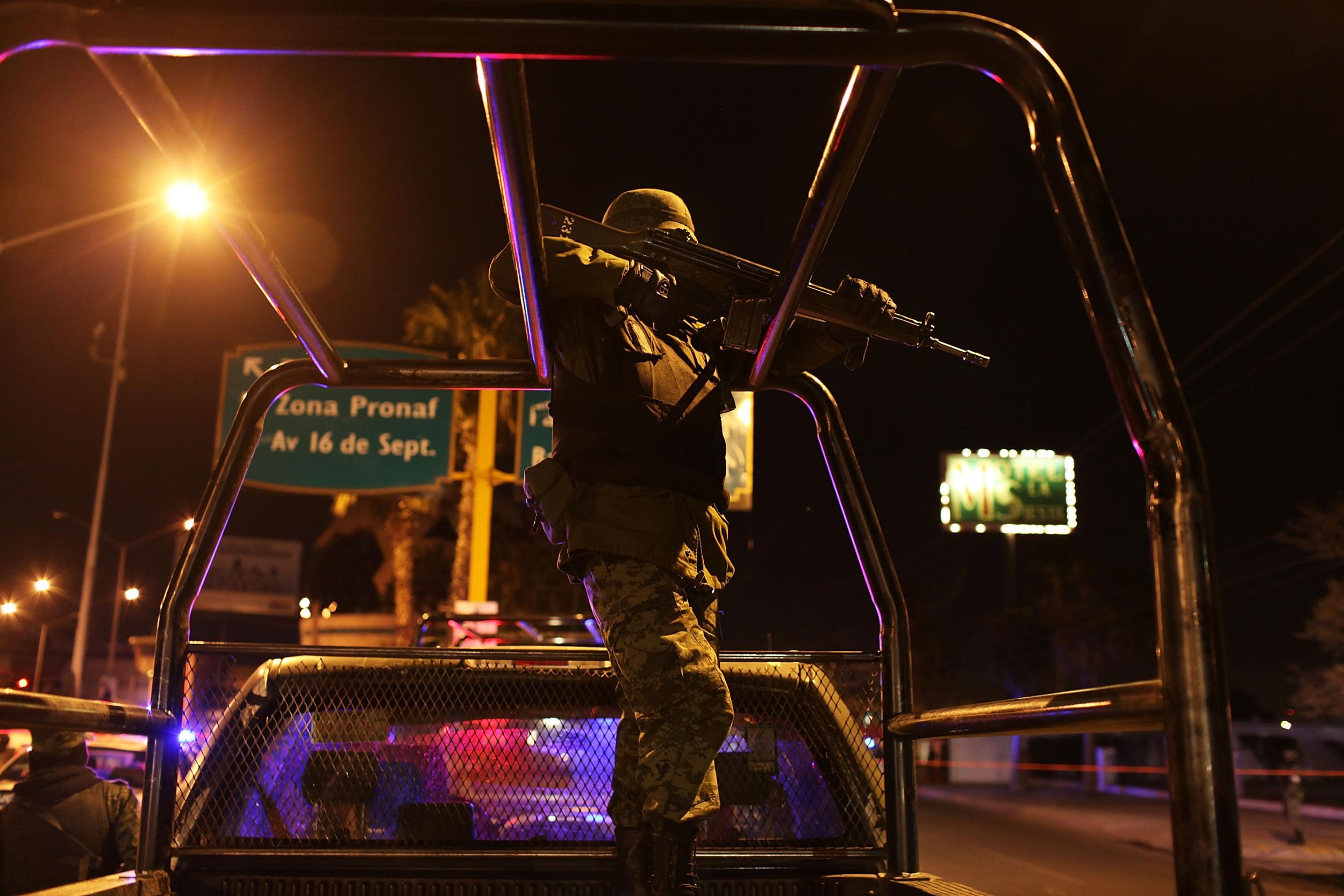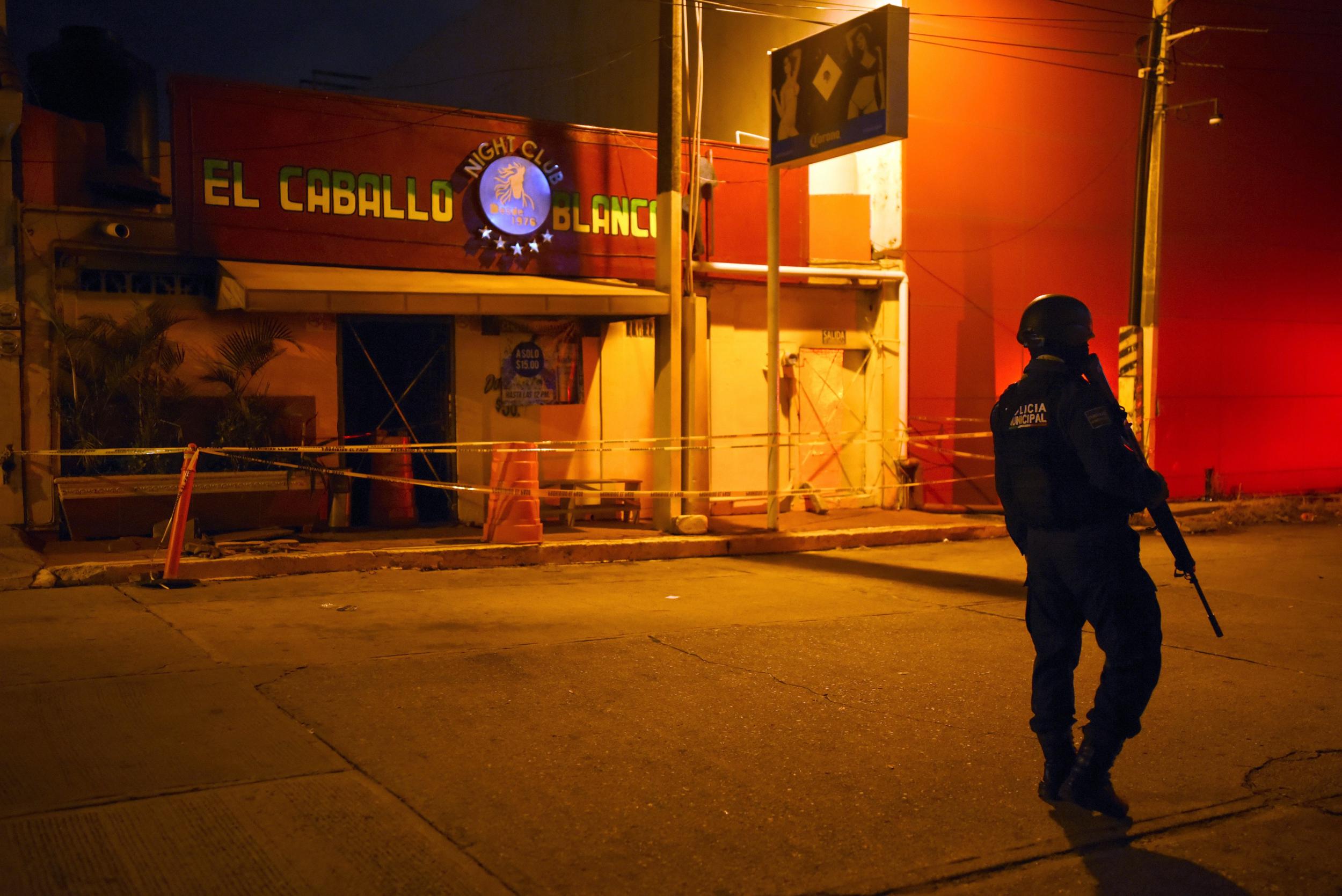‘They turned me into an animal’: How one of Mexico's deadliest assassins turned on his cartel
By 22-years-old he'd been involved in more than 100 murders. But when he was caught, rather than prosecuting him, authorities saw an opportunity

Your support helps us to tell the story
From reproductive rights to climate change to Big Tech, The Independent is on the ground when the story is developing. Whether it's investigating the financials of Elon Musk's pro-Trump PAC or producing our latest documentary, 'The A Word', which shines a light on the American women fighting for reproductive rights, we know how important it is to parse out the facts from the messaging.
At such a critical moment in US history, we need reporters on the ground. Your donation allows us to keep sending journalists to speak to both sides of the story.
The Independent is trusted by Americans across the entire political spectrum. And unlike many other quality news outlets, we choose not to lock Americans out of our reporting and analysis with paywalls. We believe quality journalism should be available to everyone, paid for by those who can afford it.
Your support makes all the difference.The recruits filed into a clearing, where a group of trainers with the stern bearing of drill sergeants stood in a tight row, hiding something.
“How many of you have killed someone before?” one of the instructors asked. A few hands shot up.
The trainers separated, revealing a naked corpse. One thrust a machete into the nearest man’s hand.
“Dismember that body,” he ordered.
The recruit froze. The instructor waited, then walked up behind the terrified recruit and fired a bullet into his head, killing him. Next, he passed the blade to a lanky teenager while the others watched, dumbfounded.
The teenager didn’t hesitate. Offered the chance to prove that he could be an assassin — a sicario — he seized it, he said. A chance at money, power and what he craved most, respect. To be feared in a place where fear was currency.
“I wanted to be a psychopath, to kill without mercy and be the most feared sicario in the world,” he said.
Like the other recruits, he had been sent by a drug cartel known as Guerreros Unidos to a training camp in the mountains. He envisioned field exercises, morning runs, target practice. Now, standing over the body, he was just trying to suppress an urge to vomit.
He closed his eyes and struck blindly.
“They took away everything left in me that was human and made me a monster,” he said.
Within a few years, he became one of the deadliest assassins in the Mexican state of Morelos, an instrument of the cartels tearing the nation apart. By 2017, at only 22 years old, he had taken part in more than 100 murders, he said. Authorities have confirmed nearly two dozen of them in Morelos alone.
When the police caught him that year, he could have faced more than 200 years in prison. But instead of prosecuting him, authorities saw an opportunity, a chance to pick apart the cartel from the inside. They made him the centerpiece of an off-the-books police operation that dismantled the cartel in southern Morelos, resulting in the arrest and conviction of dozens of its operatives.
For investigators, he was a gold mine, a complete reference book on the state’s murder industry. For the sicario, the government was a lifeline.
Of course, Mexico’s legal system wasn’t set up for this kind of arrangement.
The nation has only one official witness protection programme, at the federal level, and few in law enforcement actually trust it. Leaks, corruption and incompetence have left it in shambles.
They turned me into an animal
The police chief in Morelos at the time, Alberto Capella, wanted a witness protection program that worked, one he could use to smash organised crime in his state. So he simply created a clandestine one of his own — an improvised strategy that former justice officials describe as a legal stretch.
“We had to try something,” said Capella, who had survived an all-out gun battle with assassins years earlier, hardening his resolve. “We couldn’t just sit there and do nothing.”
The sicario’s journey from hit man to state witness — drawn from public records, at least a dozen visits to the programme and 17 months of interviews with him, his family, officials and other assassins — offers a rare glimpse into the world of Mexico’s ultraviolent killers and the lengths to which authorities will go to stop them.
The deal was simple: The sicario testified against his former comrades and bosses, detailing the inner workings of a notoriously ruthless cartel. In return, he could walk free, without facing any charges.
No paperwork. Just a gentleman’s agreement, those involved called it.
“There was nothing to think about,” the sicario recalled. “I didn’t want to spend my whole life in prison.”
Through early 2019, the sicario proved so valuable that police erected an even bigger wildcat programme around him, recruiting more than a dozen cartel henchmen and housing them in a small, worn-down building attached to the local prison.
Together, their testimony led to 100 convictions and helped cut homicides, kidnappings and extortion in the state, at least for a time, officials said. Even as violence soared across Mexico, it was down in southern Morelos.
The Making of a Sicario
Tall and slender, with a round face and hooded eyes, he moved with the economy of an athlete, which he was. He once hoped to play professional soccer, but he skipped school to hang out with a small gang, smoking pot and getting into fights. Eventually, he dropped out.
He worked his way up, from a small-time lookout for Guerreros Unidos to robbery and drug sales. The leaders noticed his ambition.
It was 2012, and Mexico’s war on drugs was in its sixth year. Violence had reached record highs as the military took to the streets to combat organised crime and the cartels battled one another for supremacy.
Murder became a form of messaging, a spectacle of sadism — bodies hanging from bridges, chopped in pieces, deposited in public plazas, each grisly crime scene a warning, a way of saying the cartel’s violence knew no limits.
“They turned me into an animal,” he said.
But behind every decision, every inhuman act, was a truth he could not escape. He chose this life. It was what he wanted.

In a year, he had transformed into a skilled assassin — battle-tested and not yet 20 years old.
After the training camp, he was sent to Acapulco, he said, to fight other cartels for the lucrative drug market in tourist districts.
A year or so later, he returned, but to a very different Morelos. His old boss had been gunned down and his old cartel, Guerreros Unidos, was nearly vanquished there, swallowed up by its one-time allies, Los Rojos.
The sicario no longer had a champion, or any allegiance at all.
The Rojos leader, Santiago Mazari Hernández, known on the street as El Carrete, sent an emissary to recruit the sicario. He wanted him to help set up drug operations across southern Morelos state.
They began selling drugs, fighting off other groups in the small towns across southern Morelos.
As their business expanded, so did their influence, especially on local government. They had local officials everywhere on the payroll, the sicario said, to prevent surprises like arrests or seizures.
Expanding operations meant cleaning out the competition, not just other cartels, but also local criminals — thieves, rapists, small-time drug dealers and snitches. Anyone who drew police scrutiny.
Murder was rarely for sport, the sicario said. He studied his victims at length, investigating the complaints against them. Once confirmed, he warned them to stop, mostly to keep them from drawing too much attention from the authorities. If they didn’t, he planned the killings meticulously, carrying them out only with approval from above.
“For me to kill someone, I had to have permission,” he explained. “Why do I want to kill that person? Not because I just don’t like them. That’s not how it works.”
Betrayal and Capture
By late 2016, he had grown numb to killing, hunting for targets with a mechanical indifference. Life mattered even less to him, his own included.
He received a promotion, which brought higher pay, more responsibilities and the envy of others. He still worked for El Carrete, who ran Los Rojos cartel, but he was consumed by paranoia, and for good reason.
The deeper he descended into the underworld, the more he understood the petty rivalries among the leadership. Their lives were steeped in mistrust. The work demanded it. Friends betrayed friends, right-hand men killed bosses.

He was told to kill members of his own team by leaders who worried they were growing too influential or undisciplined. He said he killed so many that he began to reconsider whom he hired.
In May of 2017, the police took one of his partners into custody. To avoid prison, he promised them the sicario.
On 15 May, the partner called the sicario. They had work to do, he said. It was bright outside, odd working hours for the men, but there was an emergency, his partner said.
They met up at a safe house and left together, heading towards their motorcycles parked down the street. The sicario heard the police before he saw them, the screech of tires, the revved engines. It was over in less than a minute.
At the station in Jojutla, a small white building facing the district prison, police commanders confiscated his phone. It contained enough evidence to put him away for life.
The police began adding up what they knew, starting with several homicides that traced back to him. He faced 240 years in prison for those alone.
But the police chief, Capella, had grown weary of the state’s limited tools and ambitions. Sloppy forensics, corrupt officers and haphazard investigations left few cases solved.

As the sicario sat in a ripped vinyl chair in the precinct, one of Capella’s deputies explained the arrangement.
The sicario would testify against his former comrades, detailing the many murders they had committed. But instead of describing the sicario in court or in case files as one of the killers or main conspirators, the state authorities listed him as a witness — someone with no real involvement in the crime.
The sicario, then 22, agreed to live in a building next to the prison for his own protection and be shuttled to public hearings. The state authorities did not charge him with any of the killings, choosing to wait until he was done testifying. Then, they could decide how to prosecute him, if at all.
The sicario found new purpose in confinement, helping solve cold cases, testifying against cartel players and paving the way for some two dozen convictions. The police said they saw a real transformation in him, though they had their own reasons to believe it, too.
By October of 2018, police had expanded the program to include a dozen cooperating witnesses. With no other place to put them, authorities housed the young men right next door to the jail that held the cartel members they were testifying against. Every few weeks, police ferried them to court to provide evidence in cases.
Eventually, the young men earned the trust of their wardens, and were allowed an almost comic level of autonomy.
The police knew the risks were big, as was the possibility of failure. But their confidence grew by the day. Capella, the police chief, boasted of the change the sicario’s testimony had made on the streets. One deputy said the sicario would walk free with a clean rap sheet.
The Unravelling
More than a year into the programme, Capella got a new job as police chief in the state of Quintana Roo.
With his departure, the witness protection program lost its steward. It was expensive, and off the books. No one wanted to oversee someone else’s pet project.
The young men continued to attend their court dates. But the energy of even a few months earlier began to vanish.
Nearly half of the witnesses were gone. Some had finished their court appearances and left of their own volition. Others had skipped out, content to risk the death sentence that awaited them on the street.
By the summer of 2019, the program was in rank disrepair — dirty dishes piled up, water pooled on the floor, toilets were left uncleaned. The lights didn’t even function properly anymore.
On a sunny afternoon in August, the sicario fled. A tipster warned him that police were planning to arrest him and bring charges.
He slipped out of the facility and checked into a small roadside hotel. After nearly two years under police protection, he was on his own.
A few days later, on 5 August, a pair of gunmen came to his parents’ taco stand and shot his brother four times. As the killers fled, they left a note: “Let’s see if you all learn this way.”
The brothers looked alike, so the gunmen may have thought they had killed the sicario.
“They hit me where it hurt most,” the sicario said, crying, not long after the murder. “The thing I loved most in the world, they took from me.”
Still, he insisted that he would not seek revenge.
“This will never end, no matter what I do,” he said. “But I just won’t be a part of it anymore.”
The New York Times
Join our commenting forum
Join thought-provoking conversations, follow other Independent readers and see their replies
Comments